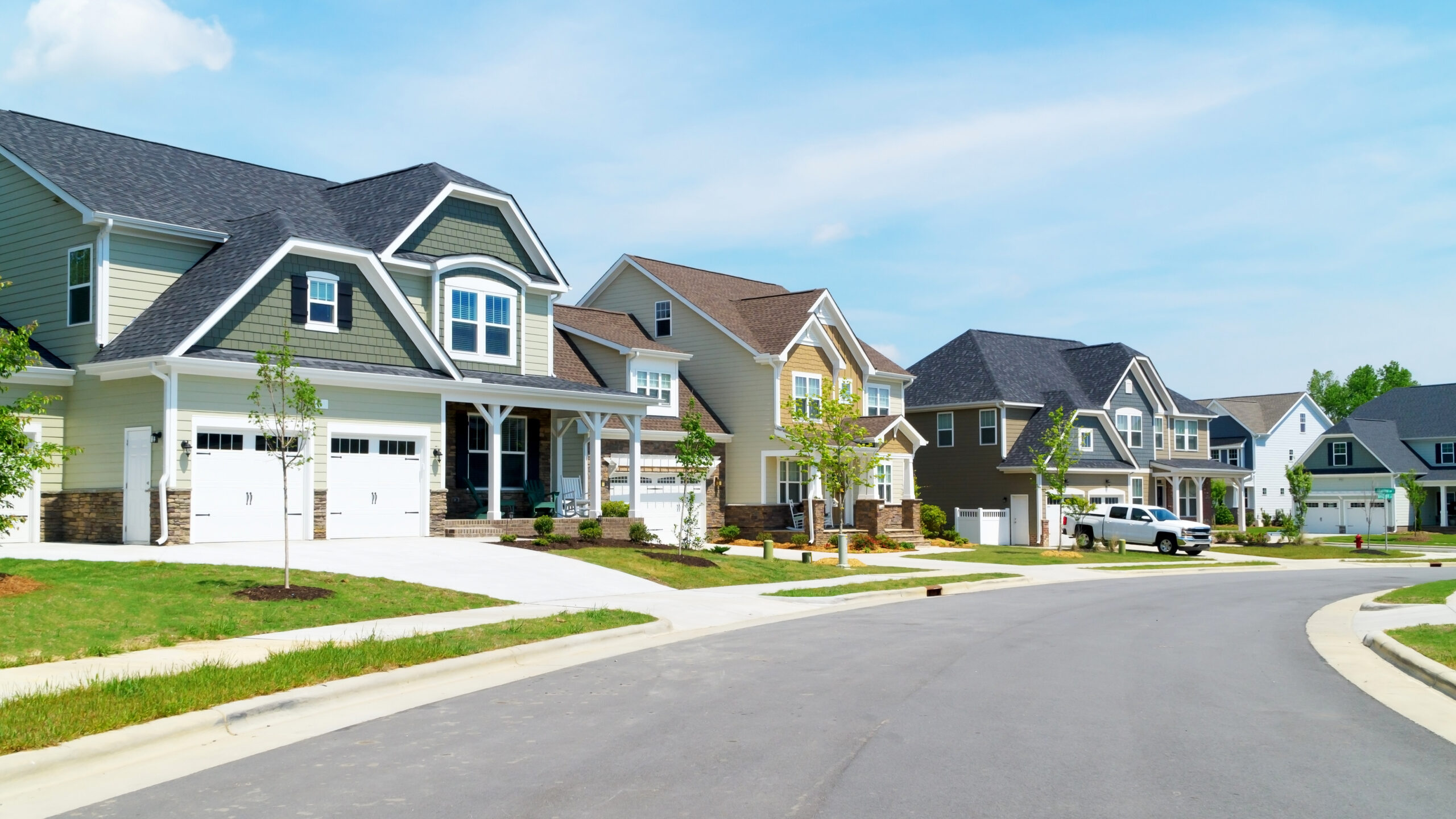If you’re looking to dip your feet into real estate investment, it can feel like the world is your oyster. And while this may be the case, does it really mean that all areas of the oyster are worth investing in?
Maybe we’re taking the analogy too far. All we’re trying to say is this— if you have the option of choosing the state that you’re investing in, there is a way that you can go about it strategically so that you’re better positioned to painlessly make passive income.
But there’s one catch: you’re going to have to look beyond “cheap states” that can offer you “cheap cities” and “cheap houses”. In this list, we will present you with a balanced overview of the states that we think you should consider if you’re buying real estate. Here’s a brief overview of the factors that we looked at to determine the states that came out ahead:
Factors we used to determine the best states for investment
Average home price: We looked for affordable housing prices that don’t represent a hurdle for investment by focusing on states that have average home prices between $100K and $300K (if you made a down payment of 20%, this range would require a down payment between $20-60K to invest).
Economic growth rate: For each state, we looked at their historic economic growth rates to ensure that there is potential for your renting pool to generate consistent passive income.
Average household income: The best tenants are the ones who can comfortably afford rent every month. We looked for a strong average household income in the area to help determine whether or not a state is a good environment for landlords.
Employment rate: In the wake of the COVID-19 pandemic, employment rates can be unpredictable. We included states that have maintained a sustainable employment rate on a regular basis. A high employment rate also indicates a strong job market.
Median gross rent: If you’re looking to make a healthy income from your rental properties, you will want to be able to charge rent that at least covers your operating expenses. However, you also don’t want to invest in an area where rents are prohibitively high. Affordable rent is an important part of finding tenants, so we aimed to find states with a good balance.
Vacancy rate: We looked at occupancy rates to give us a sign of how much difficulty you might have in finding a tenant. While 5 to 8% is the average vacancy rate, generally speaking, the lower the vacancy rate the more it will swing in a landlord’s favor.
Crime rate: We used the crime rate as a factor in determining how safe and desirable a state is to live in (this is especially important for short-term investments).
Median home value increases year-over-year: It’s no secret that home prices are universally increasing across the United States, but in some areas, the increase is much more drastic. While we recognize that rising house prices can be a good thing for a landlord looking to make a good investment, we also took into consideration the fact that exponential growth can be volatile.
Median rent increase year-over-year: Again, rent increases can be a good thing for landlords. However, if rent prices strongly outpace wage increases, it can spell out trouble in any housing market. We tried to look out for median rent increases that were healthy—i.e., not too high, not too low. Around 2% is ideal.
Owner-occupied housing unit rate: If everyone owns a home, there is not much of a renting pool for landlords to choose from. We tried to focus on states with around 60%-70% homeownership rates—this signifies a healthy economy and leaves a decent pool of renters to choose from.
Population growth: Healthy population growth is a sign of economic health, as strong job prospects are a common pull factor for those moving to a new state. It also means a new pool of renters will be looking for their next home in the state every year.
Job growth: In order to support a state’s population growth, there needs to be job growth as well. Job growth represents a healthy economy and means that you’re more likely to find high-quality tenants with steady employment.
Average property tax: Property taxes can eat into a landlord’s profit, especially if they’re investing in multiple-income properties. If we included states with higher-than-average property taxes, we made sure that it could be justified with healthy economic prospects and desirable housing stock.
The sources for the above data included the US Census, Business Insider, Zillow, Zumper, the US Bureau of Labor Statistics, Statista, the World Population Review, Rocket Mortgage, and the FBI Crime Report.
1. Iowa
Average home price: $152,885
Economic growth rate: 2%
Average household income: $61,691
Employment rate: 64.3%
Median gross rent: $808
Vacancy rate: 7.6%
Crime rate (per 100,000): 266.60
Median home value increase year-over-year: 11%
Median rent increase year-over-year: 1.09%
Owner-occupied housing unit rate: 71.1%
Population growth: 3.84%
Job growth: 2.0%
Average property tax: 1.57%
If there’s one thing our data showed us clear as day, it’s this—when it comes to housing investments, the midwest is best. With affordable house prices and affordable rent to match, housing is more accessible in Iowa than in most of the country. This, combined with a low crime rate, decent population growth, an upward trend of home value increase, and a healthy average household income, led to Iowa being crowned the number one state if you’re looking for an investment property.
2. Connecticut
Average home price: $255,555
Economic growth rate: 2.2%
Average household income: $78,833
Employment rate: 62.3%
Median gross rent: $1,177
Vacancy rate: 5.4%
Crime rate (per 100,000): 183.60
Median home value increase year-over-year: 17.3%
Median rent increase year-over-year: 3.63%
Owner-occupied housing unit rate: 66.1%
Population growth: -0.73%
Job growth: 3.1%
Average property tax: 2.14%
While Connecticut house prices are on the high side, this small state more than makes up for it with high household incomes and an impressively low crime rate that is far below the national average of 379.40. Real estate investors in Connecticut also enjoy close proximity to New York City without the competition of investing in the big city itself. Keep in mind, though, that Connecticut has high property taxes on average.
3. Idaho
Average home price: $285,982
Economic growth rate: 2.7%
Average household income: $60,999
Employment rate: 61.2%
Median gross rent: $880
Vacancy rate: 4.0%
Crime rate (per 100,000): 223.80
Median home value increase year-over-year: 35.4%
Median rent increase year-over-year: 10.67%
Owner-occupied housing unit rate: 70.0%
Population growth: 18.42%
Job growth: 2.1%
Average property tax: 0.69%
Not only does Idaho offer affordable monthly rent and healthy local average income, but it also happens to be a popular vacation destination, which may make it a possible option for investors who are hoping to rent to the seasonal crowds.
4. Kansas
Average home price: $150,657
Economic growth rate: 3.1%
Average household income: 63.5%
Median gross rent: $862
Vacancy rate: 8.3%
Crime rate (per 100,000): 410.80
Median home value increase year-over-year: 15.0%
Median rent increase year-over-year: 2.53%
Owner-occupied housing unit rate: 66.3%
Population growth: 2.07%
Job growth: 2.6%
Average property tax: 1.41%
Another entry from the midwest, Kansas offers homeowners a bargain cost of living. Although vacancy rates are a tad on the high side, landlords can ensure that they are bringing in cash flow by spending a bit more to invest in a popular area like the trendy enclave of Overland Park or the college town of Lawrence.
5. Kentucky
Average home price: $146,871
Economic growth rate: 2.5%
Average household income: 52,295
Median gross rent: $773
Vacancy rate: 6.8%
Crime rate (per 100,000): 217.10
Median home value increase year-over-year: 13.8%
Median rent increase year-over-year: 1.65%
Owner-occupied housing unit rate: 67.2%
Population growth: 3.05%
Job growth: 1.9%
Average property tax: 0.86%
Kentucky offers homeowners and renters alike low average rent and a favorable crime rate. Average household income is lower than most other states, and vacancy rates are higher, but the state shows economic growth that can indicate good things are right around the corner for the bluegrass state.
6. Minnesota
Average home price: $256,857
Economic growth rate: 2.6%
Average household income: 74,593
Median gross rent: $1,016
Vacancy rate: 8.9%
Crime rate (per 100,000): 236.40
Median home value increase year-over-year: 13.4%
Median rent increase year-over-year: -4.32%
Owner-occupied housing unit rate: 71.6%
Population growth: 7.45%
Job growth: 4.0%
Average property tax: 1.12%
We now make our way to the northern midwest United States to visit Minnesota, where home prices and rents are on the high end, but vacancy rates and crime are low. Minnesota is a great place to live in—it’s no wonder that it consistently tops lists counting down the “best places to live in the US ” with its excellent schools and low unemployment rate. Notably, it provides these amenities at a lower price than other states with similar offerings.
7. Ohio
Average home price: $128,934
Economic growth rate: 3.9%
Average household income: 58,642
Employment rate: 60.5%
Median gross rent: $813
Vacancy rate: 6.5%
Crime rate (per 100,000): 431.80
Median home value increase year-over-year: 16.0%
Median rent increase year-over-year: 2.7%
Owner-occupied housing unit rate: 66.1%
Population growth: 1.52%
Job growth: 1.9%
Average property tax: 1.56%
Houses come at a low price in Ohio, and it’s okay to let this tempt you if you’re looking to buy a rental property. Ohio is home to a number of popular cities like Cincinnati and Columbus, though there are also many gems to be found throughout the rest of the state as well. Ohio is also conveniently located within the United States, providing easy access to the Northeast, the South, and the rest of the Midwest.
8. Oregon
Average home price: $194,603
Economic growth rate: 2.9%
Average household income: 67,058
Employment rate: 59.3%
Median gross rent: $1,185
Vacancy rate: 4.7%
Crime rate (per 100,000): 306.4
Median home value increase year-over-year: 20.1%
Median rent increase year-over-year: 1.94%
Owner-occupied housing unit rate: 62.4%
Population growth: 11.78%
Job growth: 4.0%
Average property tax: 0.97%
The only entry from the usually-pricey Pacific Northwest to make our list, Oregon offers a relatively affordable housing market as well as a competitive interest rate and healthy household income. With the state’s population growing as fast as its economy, it’s a good time to invest in Oregon.
9. Pennsylvania
Average home price: $300,808
Economic growth rate: 2.2%
Average household income: 63,463
Employment rate: 60%
Median gross rent: $951
Vacancy rate: 6.5%
Crime rate (per 100,000): 221.10
Median home value increase year-over-year: 15.3%
Median rent increase year-over-year: -0.5%
Owner-occupied housing unit rate: 68.9%
Population growth: 0.73%
Job growth: 2.6%
Average property tax: 1.58%
The gateway to the country’s northeast, there’s a lot to love about Pennsylvania. This is especially true if you’re looking to make rental income, as Pennsylvania offers high employment rates, low average rent, and a crime rate that’s lower than the national average. Like Connecticut, Pennsylvania presents a less expensive alternative to nearby New York or New Jersey for real estate investors, especially in Philadelphia and surrounding areas..
10. Wisconsin
Average home price: $200,029
Economic growth rate: 2.9%
Average household income: 64,168
Employment rate: 63.8%
Median gross rent: $867
Vacancy rate: 3.5%
Crime rate (per 100,000): 293.20
Median home value increase year-over-year: 14.7%
Median rent increase year-over-year: 2.14%
Owner-occupied housing unit rate: 67.0%
Population growth: 2.85%
Job growth: 2.7%
Average property tax: 1.85%
Wisconsin is one of the best states to buy property in, with low entry-level home prices and a decent economic growth rate. With an array of universities, healthcare services, and industries, Wisconsin has a well-diversified economy which means there are consistently newcomers who are in need of housing.
Final Thoughts:
Every US state has perks to offer to real estate investors, but we’re confident that the above states are a solid choice for eager investors. If you have the flexibility to invest your money in any area of the United States, why not look at one of the states listed above? The chances are good that you won’t regret it.
FAQs
In terms of house prices, the five most expensive states are as follows: Hawaii, California, Massachusetts, Virginia, and Washington. While all of these states come with high-quality schools, healthcare facilities, and recreational opportunities, they do come at a high cost. Each of these states has average home prices of close to or over $500,000. It’s worth noting, though, that Hawaii does offer some of the country’s lowest property taxes which may make it an enticing option for some people.
The states that offer the lowest cost of living in terms of house prices are all in the south and the midwest. They are, from least expensive onward: Mississippi, Arkansas, Ohio, Alabama, and Kentucky. While house and rent prices are lower in these locations, it’s worth noting that average household income tends to be lower as well. This is in addition to the fact that these states, on average, have lower economic growth rates and employment rates.
Maine, New Hampshire, Connecticut, New Jersey, and Vermont have the lowest crime rates in the country. While the average crime rate for the United States is 379.40 violent crimes for 100,000 people, the crime rates for these states are 115.20, 152.50, 183.60, 202.20, and 206.90, respectively. Given low crime rate can be an indicator of an area’s desirability, it’s an important factor for real estate developers to take into consideration.







